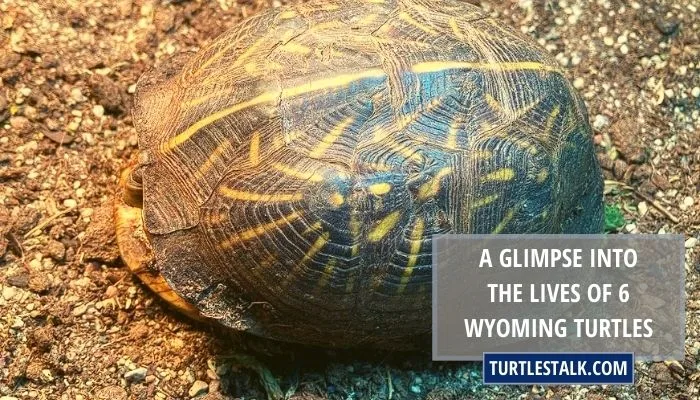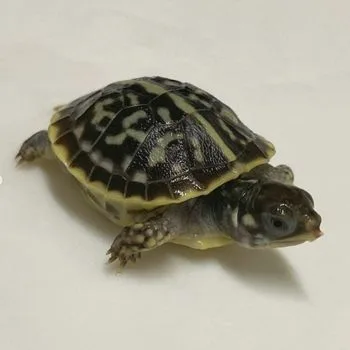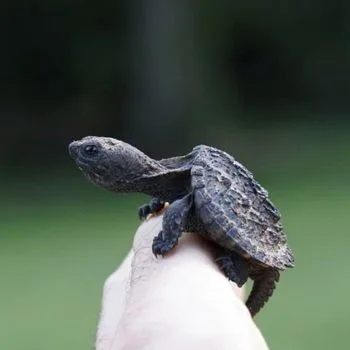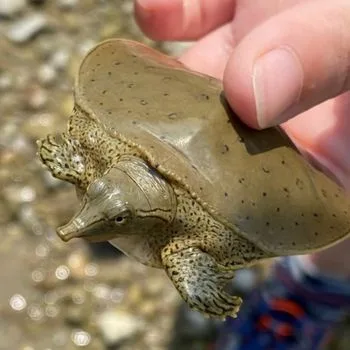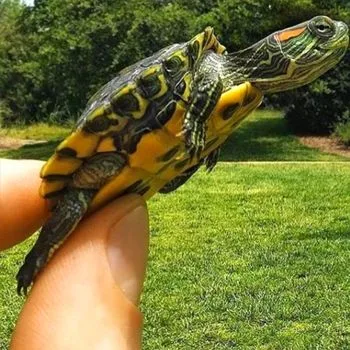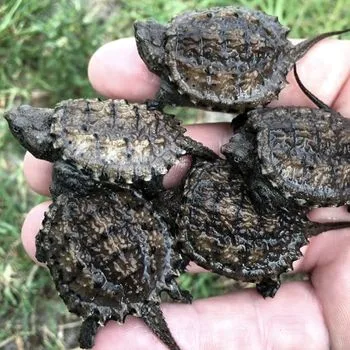A Glimpse Into the Lives of 6 Wyoming Turtles
Ever wondered what type of turtles roam the wilds of Wyoming? Well, look no further! From semi-aquatic to terrestrial, we’ve got all six species covered.
You can find four native species such as the Western Painted turtle, Eastern Spiny Softshell and Common Snapping turtle – all with their own unique characteristics.
And then there are two non-native invaders that have made their way into this beautiful state: Red-eared Slider and Alligator Snapping turtle. So let’s dive right in and explore these fascinating creatures living in Wyoming!
| # | Name | Details | Image |
| 1 | Ornate Box Turtle (Terrapene Ornata Ornata) |
| 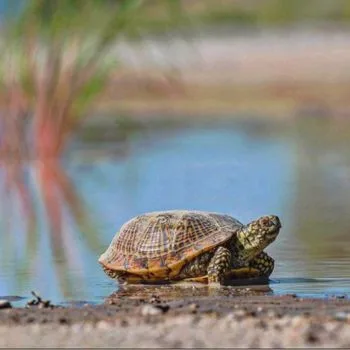 |
| 2 | Western Painted Turtle |
| 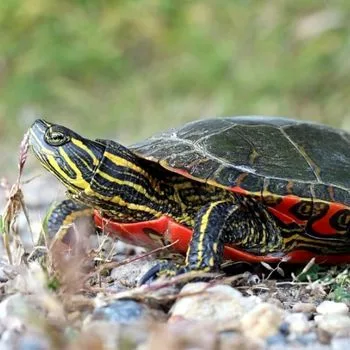 |
| 3 | Common Snapping Turtle (Chelydra serpentina) |
| 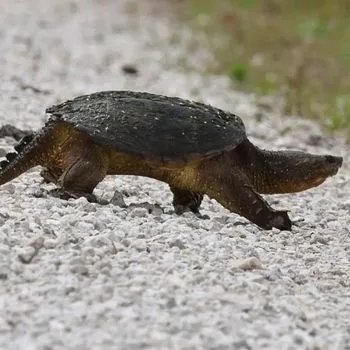 |
| 4 | Eastern Spiny Softshell Turtle (Apalone Spinifera) |
| 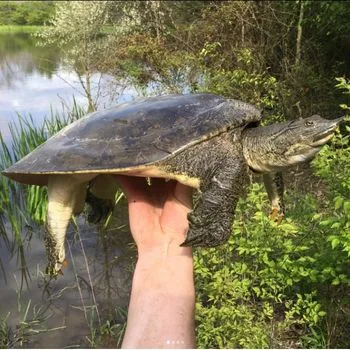 |
| 5 | Red Eared Slider (Trachemys Scripta Elegans) |
| 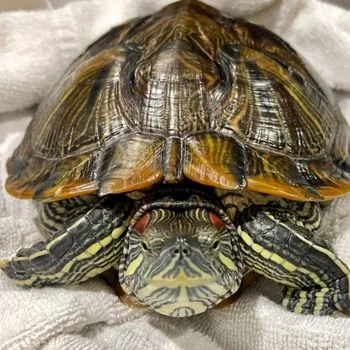 |
| 6 | Alligator Snapping Turtle (Macrochelys Temminckii) |
| 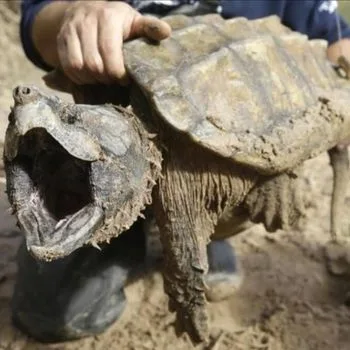 |
6 Turtles You Can Find in Wyoming
In total, there are 6 species of turtles in the state of Wyoming. This guide will take you on an exploration through each turtle type and provide tips for providing them with proper care. So, let’s get started on our journey into discovering all the wonders that these reptiles have to offer!
1. Ornate Box Turtle (Terrapene Ornata Ornata)
- Family: Emydidae
- Genus: Terrapene
- Type: Terrestrial turtle
- Natural Habitat: Open landscapes such as pastures, prairies, and lightly forested areas
- Lifespan: 30 – 40 years
- Also Known As: Western box turtle
- Maximum Size: 4-5 inches
- Maximum Weight: 1-1.5 pounds
- Prone to Diseases: Vitamin deficiency, respiratory diseases
- Disease Carrier: Salmonella
- Aggression Level: Males display a tendency towards aggressive behavior, including biting and clashing their shells against each other
- Predators: Birds, such as crows, raptors, and ravens; domestic cats and dogs; opossums; raccoons; skunks; snakes; and even adult box turtles
- Domestication: Can be kept as pet
Have you ever wondered what kind of magical creature might be lurking in the forests and wetlands of Wyoming? Well, say hello to the Ornate Box Turtle! This amazing animal is closely related to its box turtle cousins, but it can also be identified by its intricate patterned shell – hence its name.
With a small head and body covered in an ornately patterned carapace or upper shell that’s usually brown with yellowish-orange markings, these turtles stand out from the crowd.
It spends most of its time hiding under cover while searching for food such as snails and insects, often seen out on warm summer days. So next time you take a walk through Wyoming, keep your eyes open for the Ornate Box Turtle – after all, who knows what else might be living there!
2. Western Painted Turtle
- Family: Emydidae
- Genus: Chrysemys
- Type: Aquatic turtle
- Natural Habitat: Likes bodies of water with soft mud floors and abundant aquatic plants, e.g. rivers, lakes, wetlands, oxbows, ponds, ditches, and reservoirs.
- Lifespan: Usually 20 – 30 years, but in better habitat can live up to 50 years
- Maximum Size: 4 – 6 inches
- Maximum Weight: Gets about 1 pound
- Prone to Diseases: Vitamin deficiencies, metabolic bone disease, and intestinal parasites
- Disease Carrier: Salmonella
- Aggression Level: Aggressive baskers
- Predators: Raccoons, skunks, foxes, herons, other birds, snakes, and large predaceous fish
- Domestication: Can be kept as pets
The Western Painted Turtle, scientifically known as Chrysemys picta bellii, is an aquatic creature native to North America. It can be found in states such as Wyoming; making its way up right into British Columbia in Canada. Adults typically measure between 9-10 inches in length while juveniles/hatchlings are smaller at around 2-3 inches.
They live in freshwater habitats such as ponds, rivers and lakes where they swim with ease due to their long tails and streamlined shells of webbed feet. Although usually not aggressive creatures, they have predators that include raccoons and herons among others which make them a species of special concern in some regions.
In most US states it is legal to keep Western Painted Turtles as pets with proper care but one should always check local regulations for necessary requirements first.
3. Common Snapping Turtle (Chelydra serpentina)
- Family: Chelydridae
- Genus: Chelydra
- Type: Freshwater turtle
- Natural Habitat: Freshwater habitats such as lakes, rivers, and swamps
- Lifespan: 50 years
- Maximum Size: 19 inches
- Maximum Weight: 40 pounds
- Prone to Diseases: Fungal infections and shell rot
- Aggression Level: Not aggressive until provoked
- Predators: River otters, bears and coyotes
- Domestication: Not recommended as pets
The Common Snapping Turtle, scientifically known as Chelydra serpentina, is an aquatic species native to freshwater habitats such as lakes, rivers and swamps. These turtles are highly adaptable and can live up to 50 years in the wild.
Adult Common Snapping Turtles typically measure 10-16 inches in shell length but can grow up to 19 inches and weigh around 40 pounds. They have a powerful bite with an estimated pressure of over 600 psi, making them one of the strongest biters among reptiles. Despite their strength they are generally not aggressive animals, though it is best to not provoke them and take caution around them.
Common Snapping Turtles often face threats from predators such as river otters, bears and coyotes when living out in the wild.
Unfortunately, their habitat is also threatened by human activities such as development and pollution which can lead to a decrease in population numbers if conservation efforts are not taken soon here in Wyoming.
Although they make fascinating pets due to their long lifespan of up to 50 years when cared for properly, some states have regulations or restrictions on owning them so check with local authorities before acquiring this species as a pet.
These turtles have webbed feet for swimming and a long tail for propulsion allowing them to move quickly through water which also makes them difficult prey for predators.
Furthermore, although they occupy multiple states across North America from Alabama to Wyoming there is no other name than the Common Snapping Turtle so it’s easy to identify.
It should be noted that this species does not carry any significant disease that can be transmitted to humans yet they may still be prone to diseases like fungal infections or shell rot when kept in unsanitary conditions so proper care must be taken here in Wyoming when considering owning one of these remarkable creatures as a pet.
4. Eastern Spiny Softshell Turtle (Apalone Spinifera)
- Family: Trionychidae
- Genus: Apalone
- Type: Freshwater turtle
- Natural Habitat: Slow-moving rivers, streams, ponds, and lakes with soft bottoms and abundant aquatic vegetation
- Lifespan: 30 to 40 years
- Maximum Size: 18 inches
- Maximum Weight: 12 lbs
- Prone to Diseases: Respiratory infections, shell rot, and pneumonia
- Aggression Level: Not aggressive, but will bite if threatened
- Predators: Raccoons, alligators, snapping turtles, otters, and larger fish
- Domestication: Not commonly kept as pets
The Eastern Spiny Softshell Turtle (Apalone Spinifera) is an incredible species of freshwater turtle found throughout Wyoming. With powerful legs for swimming and a streamlined shell, this impressive creature has adapted to its aquatic environment over millennia. Adults measure between 8-18 inches with males being smaller at 8-12 inches compared to10-18 inches for females, weighing from 4-12lbs respectively. Despite their small size they are surprisingly strong and have a bite force that can put unsuspecting predators on their guard!
Yet these turtles aren’t all aggression; they’re also known to be quite timid and shy when humans appear near them, preferring the safety of rivers, streams or lakes – where plenty of vegetation exists in soft bottomed areas – as habitats. Unfortunately however some populations have declined due to habitat loss or collection for pets so it’s important we do everything in our power to protect these creatures and maintain a healthy ecosystem here in Wyoming!
5. Red Eared Slider (Trachemys Scripta Elegans)
- Family: Emydidae
- Genus: Trachemys
- Type: Aquatic turtle
- Natural Habitat: Streams, rivers, ponds, lakes, swamps, and marshes
- Lifespan: 20 – 30 years
- Also Known As: Red-eared terrapin
- Maximum Size: 7 – 12 inches, females get larger than 12 inches
- Maximum Weight: 3 – 6 pounds
- Prone to Diseases: Respiratory infections, shell rot, and other diseases if kept in unsanitary conditions.
- Disease Carrier: Salmonella
- Aggression Level: Not aggressive
- Predators: Raccoons, otters, fish, frogs, snakes, skunks and birds
- Domestication: Can be kept as pets
The Red Eared Slider (Trachemys scripta elegans) is a freshwater reptile with a striking appearance. Found in Wyoming’s waterways, these turtles can reach up to 10-12 inches long as adults and can live for an impressive 30 years. They have webbed feet that are adapted for swimming, making them incredibly agile aquatic creatures.
Males and females exhibit different size ranges, with males being more diminutive compared to the females and juveniles measuring only 2-3 inches when fully grown. Although they may take on aggressive postures if threatened, their bite force is not enough to cause any damage to humans or other larger animals.
It’s important that we respect the habitats of these amazing reptiles so that future generations will be able to enjoy them too – keep their environments clean by disposing of garbage properly and avoid disturbing the fragile ecosystems where they make their homes!
6. Alligator Snapping Turtle (Macrochelys Temminckii)
- Family: Chelydridae
- Genus: Macrochelys
- Type: Freshwater turtle
- Natural Habitat: Slow-moving rivers, canals, lakes, and swamps in the southeastern united states
- Lifespan: 60-70 years
- Maximum Size: 30 inches
- Maximum Weight: 220 pounds
- Aggression Level: Moderate
- Predators: Large fish, birds of prey, and humans
- Domestication: Not recommended as pet
The Alligator Snapping Turtle (Macrochelys temminckii) is a large freshwater turtle native to the southeastern United States. Adults can reach up to 30 inches in length and weigh up to 220 pounds. Juvenile alligator snapping turtles are much smaller, usually between 4-10 inches in length. When you’ll come across this species in Wyoming, you’ll notice that it has a very unique appearance, with an oversized head and a spiked tail that looks like an alligator’s claw.
The shell of this turtle is dark brown or black with yellow spots and stripes over it, giving the impression of scales on an alligator’s back.
Alligator snapping turtles are powerful predators and their bite force is strong enough to break through bone. They feed mainly on fish but also consume invertebrates, amphibians, and other turtles. These turtles are ambush predators, waiting for prey to come close before attacking. They are not considered aggressive towards humans but should still be handled with caution as they may bite if startled.
In the wild, alligator snapping turtles can live up to 60-70 years and have few natural predators due to their large size. However, their populations have declined in some areas due to habitat loss, illegal harvesting, and pollution. In order to protect this species from further decline, many states regulate or ban the possession of alligator snapping turtles as pets. Furthermore, it is important that you research the specific laws and regulations of your state or municipality before owning a pet turtle.
Final Words
In the state of Wyoming—a place rich in biodiversity—turtles play a significant role; with a variety of species dwelling in its forests, beaches, and rivers.
In this article, we took a closer look at these fascinating creatures (including their natural habitats, lifespan, size and weight, predators, and domesticability). It’s worth noting that, while keeping these turtles as pets is legal; their populations in Wyoming may be declining due to habitat loss and collection for the pet trade.
It is our responsibility to ensure that these turtles remain protected and preserved for future generations to enjoy in the state of Wyoming.
Other Nearby States:

